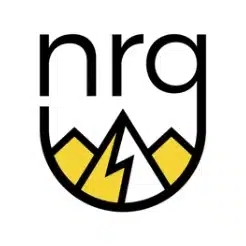Becoming a chiropractor in Vancouver, Canada requires a significant amount of education and training. Prospective chiropractors must first complete a minimum of three years of undergraduate education, including courses in biology, chemistry, physics, and psychology. After completing their undergraduate degree, students must then enroll in a four-year Doctor of Chiropractic program at an accredited chiropractic college or university. During this program, students will study a variety of subjects, including anatomy, physiology, pathology, and chiropractic techniques. They will also gain practical experience through clinical internships and hands-on training.
Upon completion of their Doctor of Chiropractic degree program, graduates must pass the Canadian Chiropractic Examining Board (CCEB) exams in order to become licensed, for most chiropractors, to practice in Canada. These exams assess the candidate’s knowledge and skills in areas such as diagnosis, chiropractic techniques, and professional ethics. Once licensed, chiropractors must adhere to the regulations and standards set by the provincial regulatory bodies in the province where they wish to practice. This may include completing continuing education requirements to maintain their license and stay up-to-date with the latest developments in the field.
Key Takeaways
Education and training requirements for chiropractors in Canada are rigorous and include completing a Doctor of Chiropractic degree from a recognized institution.
Licensing and certification are essential for practicing as a chiropractor in Canada, and candidates must pass the Canadian Chiropractic Examining Board (CCEB) exams to obtain their license.
Gaining practical experience through internships and residencies is crucial for chiropractic students to develop their skills and knowledge in a real-world setting.
Transitioning from student to professional can present challenges, but also opportunities for growth and development in the chiropractic field.
Building a successful chiropractic practice in Canada requires a combination of clinical expertise, business acumen, and a strong understanding of the local healthcare landscape.
The Role of Licensing and Certification in the Chiropractic Field
Licensing and certification play a crucial role in ensuring that chiropractors in Canada meet the necessary standards of education, training, ethics examination and professional competence. In addition to passing the CCEB exams, chiropractors must also obtain liability insurance and register with their provincial regulatory body in order to practice legally. This registration process typically involves submitting proof of education and training, passing a jurisprudence exam, and undergoing a criminal record check.
Once licensed, chiropractors are required to adhere to a code of ethics and conduct that governs their professional behavior and interactions with patients. This includes maintaining patient confidentiality, obtaining informed consent for treatment, and providing high-quality care in a safe and ethical manner. Failure to comply with these standards can result in disciplinary action by the regulatory body, including fines, suspension, or revocation of the chiropractor’s license and registration.

Gaining Practical Experience: Internships and Residencies for Chiropractic Students
Gaining practical experience is an essential part of the journey to becoming a chiropractor in Canada. Many chiropractic colleges offer clinical internships and residencies that allow students to work under the supervision of experienced chiropractors and gain hands-on experience treating patients. These opportunities provide students with the chance to apply their knowledge and skills in a real-world setting, as well as receive valuable feedback and mentorship from seasoned professionals.
During their internships and residencies, students may have the opportunity to work with a diverse range of patients, including those with musculoskeletal injuries, chronic pain conditions, and sports-related injuries. They will also learn how to develop treatment plans, perform spinal adjustments and manipulations, and educate patients about preventive care and lifestyle modifications. This practical experience is invaluable for preparing students for the challenges and responsibilities they will face as practicing chiropractors.
Transitioning from Student to Professional: Challenges and Opportunities
Transitioning from student to professional can be both exciting and challenging for new chiropractors in Canada. On one hand, they have the opportunity to apply their knowledge and skills in a clinical setting, build relationships with patients, and make a positive impact on their health and well-being. On the other hand, they may face challenges such as building a patient base, managing administrative tasks, and navigating the complexities of running a business.
New chiropractors may also encounter challenges related to working with other healthcare professionals, educating the public about the benefits of chiropractic care, and staying abreast of the latest research and developments in the field of chiropractic education. However, they also have the opportunity to collaborate with other healthcare providers, participate in community outreach programs, and pursue advanced training and specialization in areas such as sports medicine, pediatrics, or geriatrics.
Building a Successful Chiropractic Practice in Canada
Building a successful chiropractic practice in Canada requires a combination of clinical expertise, business acumen, and effective communication skills. Chiropractors must be able to attract and retain patients by providing high-quality care, fostering trust and rapport, and delivering positive outcomes. They must also be able to effectively market their services, manage their finances, and comply with regulatory requirements.
In addition to clinical skills, successful chiropractors must also possess strong leadership abilities, problem-solving skills, and a commitment to ongoing professional development. They must be able to adapt to changes in the healthcare landscape, leverage technology to improve patient care, and advocate for policies that support chiropractic profession and the integration of chiropractic care into mainstream healthcare.
Continuing Education and Professional Development for Chiropractors
Continuing education is essential for chiropractors in Canada to stay current with advances in the field and maintain their professional competence. Many regulatory bodies require chiropractors to complete a certain number of continuing education credits each year in order to renew their license. This may involve attending seminars, workshops, or conferences on topics such as new treatment modalities, research findings, or practice management.
Chiropractors may also choose to pursue advanced training or certification in specialized areas of practice, such as sports chiropractic, acupuncture, or rehabilitation therapy. This additional training, many chiropractors can enhance their clinical skills, expand their scope of practice, and increase their marketability. By investing in their ongoing education and professional development, chiropractors can continue to provide high-quality care and meet the evolving needs of their patients.

The Future of Chiropractic Care in Canada: Trends and Opportunities
The future of chiropractic care in Canada is filled with both challenges and opportunities. On one hand, there is growing recognition of the value of chiropractic care as a safe and effective treatment option for musculoskeletal conditions, pain management, and preventive care. Chiropractors have the opportunity to collaborate with other healthcare providers, participate in interdisciplinary care teams, and contribute to efforts to improve patient outcomes and reduce healthcare costs.
At the same time, chiropractors must navigate changes in healthcare policy, advances in technology, and shifts in patient preferences and expectations. They must be prepared to adapt to new models of care delivery, embrace evidence-based practices, and advocate for policies and legislation that support patient access to chiropractic services. By staying informed about emerging trends and seizing opportunities for innovation and collaboration, chiropractors can help shape the future of healthcare in Canada.
In conclusion, becoming a chiropractor in Canada is a rigorous but rewarding journey that requires dedication, perseverance, and ongoing commitment to professional growth. By meeting the education and training requirements, obtaining licensure, gaining practical experience, and embracing opportunities for continued learning and development, chiropractors can build successful practices that make a positive impact on the health and well-being of their patients. As the field of chiropractic care continues to evolve, there are numerous opportunities for chiropractors to contribute to the advancement of healthcare in Canada and improve the lives of those they serve.
FAQs
What is the process of becoming a chiropractor in Canada?
To become a chiropractor in Canada, individuals must complete a minimum of three years of undergraduate education, followed by a four-year Doctor of Chiropractic program at a recognized chiropractic institution or university. After completing the program, graduates must pass the Canadian Chiropractic Examining Board (CCEB) exams and obtain a license to practice in their respective province.
What are the educational requirements to become a chiropractor in Canada?
Aspiring chiropractors in Canada must complete a minimum of three years of undergraduate education, including specific prerequisite courses in subjects such as biology, chemistry, and physics. Following undergraduate studies, individuals must complete a four-year Doctor of Chiropractic program at a recognized chiropractic institution.
What exams are required to become a licensed chiropractor in Canada?
After completing the Doctor of Chiropractic program, graduates must pass the Canadian Chiropractic Examining Board (CCEB) exams, which consist of written and practical assessment components. These exams assess the candidate’s knowledge and clinical skills to ensure they meet the standards for chiropractic practice in Canada.
How do I obtain a license to practice as a chiropractor in Canada?
Once individuals have completed the required education programs and passed the CCEB exams, they can apply for licensure to practice as a chiropractor in their respective province. Each province has its own regulatory body for chiropractors, and applicants must meet the specific requirements set by the regulatory college in their province.
What is the scope of practice for chiropractors in Canada?
Chiropractors in Canada are trained to assess, diagnose, and treat musculoskeletal conditions, primarily through manual adjustments and other manual therapies. They may also provide patient education, rehabilitation exercises, nutrition and lifestyle advice to support overall health and wellness. Chiropractors work within a collaborative healthcare system and may refer patients to other healthcare professionals when necessary.
References
- Chiro Recruit: A comprehensive guide on the essential steps to becoming a chiropractor in Canada.
- Coursera: An article outlining the process and requirements for becoming a chiropractor in Canada.






0 Comments